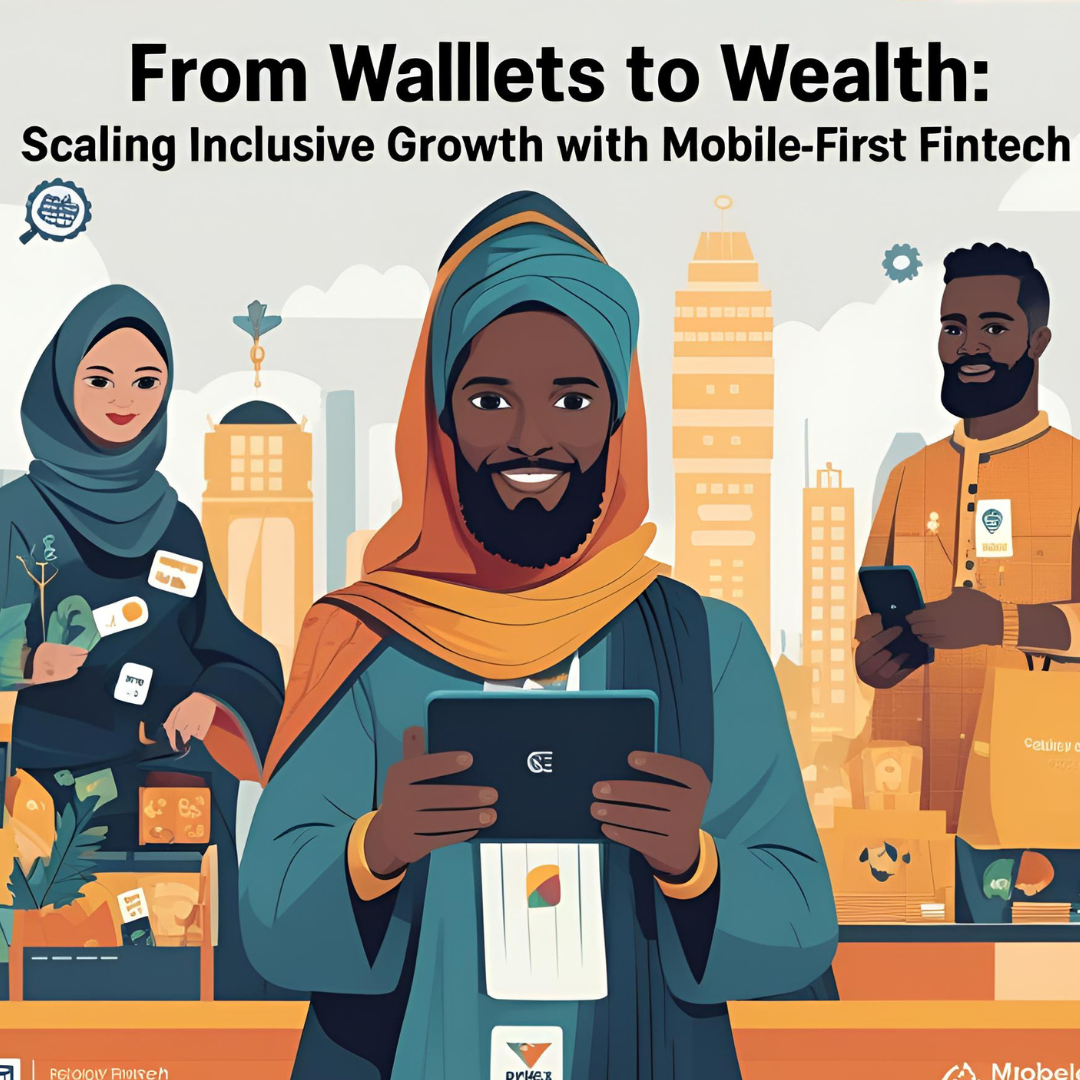In the last decade, the evolution of financial technology (fintech) has reshaped the economic landscape across the globe. Nowhere is this transformation more profound than in emerging economies, where mobile-first fintech solutions have become the key to unlocking financial inclusion, promoting entrepreneurship, and enabling upward mobility. But moving beyond access to truly create wealth requires more than just digital wallets — it demands ecosystems built to scale inclusive growth.
The Rise of Mobile-First Fintech
Mobile-first fintech refers to digital financial services designed primarily for mobile devices — a critical distinction in regions where traditional banking infrastructure is limited, but smartphone penetration is rapidly increasing. This mobile-centric approach has proven especially effective in Africa, Southeast Asia, and Latin America, where millions of people remain unbanked or underbanked.
Services like M-Pesa in Kenya, Paytm in India, and Wave in Senegal have shown how powerful simple mobile-based transactions can be. These platforms allow users to send and receive money, pay bills, and access microloans with just a few taps. But the real question today is: how do we move from digital wallets to digital wealth?
Digital Access Isn’t Enough
While mobile wallets have lowered entry barriers into the financial system, they’re just the starting point. True financial inclusion means more than being able to store and transfer money — it means being able to build, grow, and protect wealth.
Most mobile fintech apps today still focus on basic payments. To scale inclusive growth, we need to shift the focus to financial empowerment. This includes:
- Access to credit based on alternative data like mobile usage and transaction history
- Savings tools with flexible structures for low-income users
- Insurance products that are affordable, understandable, and relevant
- Investment options, even in fractional amounts, for wealth generation
- Financial education embedded into the user journey
Scaling from access to impact means building tools that help people not just manage money, but grow it.
Mobile-First Means User-First
Mobile-first fintech must go beyond user interfaces — it must be user-centric at its core. In low-income or rural communities, trust, literacy, and cultural relevance are non-negotiable factors.
For example, an app offering micro-investments in government bonds might seem progressive, but if the user doesn’t understand compound interest or doesn’t trust digital systems, adoption will be low. That’s why co-designing with local communities, leveraging local languages, and integrating human touchpoints (like agent networks) are key.
Additionally, we must consider gender inclusion. Studies show that women are more likely to be financially excluded. Mobile-first fintech can reverse that — but only if it consciously addresses digital literacy gaps, privacy concerns, and social norms that prevent women from fully participating in financial systems.
Data as a Driver of Inclusive Credit
One of the most exciting opportunities in mobile-first fintech is alternative credit scoring. Traditional banking systems rely on formal employment and credit history — two things many in the informal sector lack. Mobile usage data, transaction histories, social connections, and even mobile recharge behavior can all be used (ethically and with consent) to assess creditworthiness.
By turning mobile behavior into financial identity, fintech platforms can offer small loans to first-time borrowers, helping them start businesses, invest in education, or handle emergencies. As these users repay loans, their financial footprint grows, unlocking access to larger credit and broader economic participation.
Infrastructure Still Matters
Even the most innovative fintech solution needs strong infrastructure to thrive. That includes reliable internet access, national ID systems, interoperability between platforms, and sound regulatory environments. Governments, telecom providers, and fintech companies must collaborate to create ecosystems where mobile-first solutions can scale sustainably.
Equally important is data protection and consumer trust. Mobile-first doesn’t mean security-second. Users need assurance that their data is safe, their transactions are transparent, and they have recourse when something goes wrong.
Real-World Impact: From Wallets to Enterprises
When done right, mobile-first fintech can fuel a powerful cycle: digital access leads to financial identity, which leads to credit, which sparks entrepreneurship and income generation. We’ve seen examples where a simple mobile loan helped a woman in Uganda expand her roadside vegetable stall, turning a subsistence operation into a sustainable business. Or where mobile savings apps helped farmers in Nigeria plan for seasonal income cycles, reducing reliance on exploitative lenders.
In these cases, the wallet was the doorway — but the wealth came from tools that enabled agency, planning, and growth.
The Road Ahead
To truly scale inclusive growth, fintech players must expand their vision. It’s not enough to bring people into the system — we must ensure they thrive within it. That means investing in:
- Human-centered design that listens before it builds
- Product bundles that combine savings, credit, insurance, and education
- Public-private partnerships to strengthen financial infrastructure
- Interoperable systems that don’t lock users into silos
- Impact metrics that go beyond downloads to measure life improvement
Conclusion
The journey from wallets to wealth is not just a technological shift — it’s a mindset change. Mobile-first fintech has the potential to be one of the most powerful tools for economic equity in our time. But only if we build it with the people it seeks to serve at the center. Financial inclusion should not be a checkbox — it should be a launchpad.
Because when people are given the tools to not just access money, but to build their own futures, the ripple effect goes far beyond individuals. It uplifts families, communities, and entire economies.


